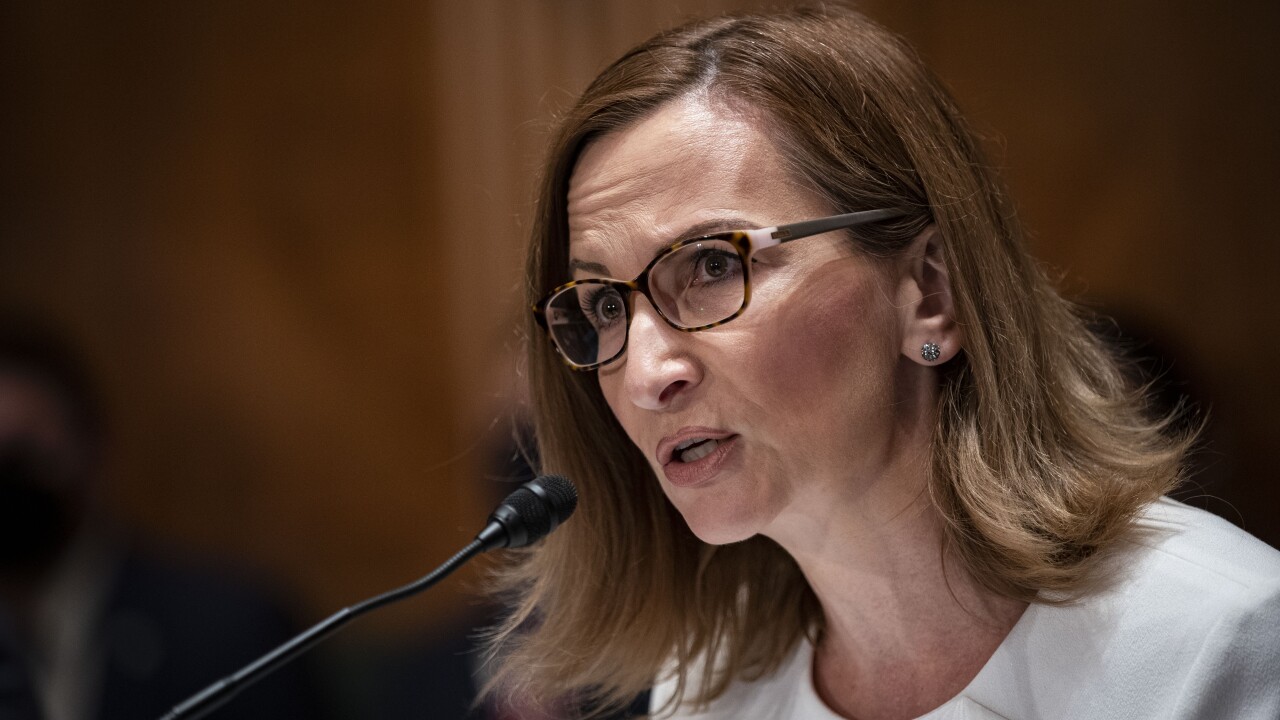
Ivy Bank, Cambridge Savings Bank's national digital bank subsidiary, reached $1 billion in deposits in just over three years, despite increasing competition in the market.
"This is over and above what the team thought was going to happen, so we're pleasantly surprised," CEO Ryan Bailey said in an interview. "I'm really proud of the team."
As for Ivy's second billion dollars, Bailey believes it will come quicker. "We're seeing growth accelerate," he said. "Competition is heating up. A lot of [institutions] are launching digital banks and want to be in the space … [but] we have a good team in place that is doing great things."
Ivy Bank reached the $1 billion-deposit threshold about four months after Jenius Bank, the digital division of the $5.5 billion SMBC MANUBANK in Los Angeles,
The $7.1 billion-asset Cambridge, a depositor-owned mutual bank founded in April 1834 in Cambridge, Massachusetts, launched Ivy in June 2021 with an overriding mission to gather deposits around the country that it could lend in the highly competitive Boston region. "Because we have this capability, it really does help us lend locally," Bailey said.

While more than 100 banks do business in the Boston metropolitan area, according to Federal Deposit Insurance Corp. statistics, Cambridge appears to be holding its own. Its loans totaled $5.8 billion on June 30, increasing 41% since Ivy's launch.
"We're very strong in the lending category," Bailey, who
Ivy serves more than 14,000 depositors in 49 states, including what Cambridge said is a growing number of younger customers. "I am so proud of the exceptional digital experience and supporting financial tools we have built for Ivy Bank's customers," Cambridge First Vice President Kim Strout said in a press release. "By enhancing our customers' toolkit of resources, we aim to further empower them on their financial journey."
Cambridge may also be looking to grow physically. The bank "is ready for any type of opportunistic acquisition in the market," Bailey said. "As the banking industry consolidates, Cambridge Savings Bank continues to look at opportunities."
Ivy's growth has come at a time when the industry as a whole struggles to maintain deposit balances. Indeed, since the summer of 2021, the runoff of pandemic-era stimulus cash, higher interest rates and a series of bank runs last spring have combined to crimp deposit-gathering efforts. Powered by Ivy, Cambridge grew deposits 26% the past three years to $5.6 billion. Industrywide deposit growth amounted to 0.4% over the same span, according to the FDIC.
The tighter deposit market may help explain the recent uptick in banks launching national digital subsidiaries. In June, the $1.4 billion-asset Bank Midwest in Kansas City, Missouri, unveiled OnePlace.bank to serve medical, dental and veterinary practitioners. The $7.8 billion-asset Liberty Bank in Middletown, Connecticut,
"A digital brand can be a great way to reach new markets and attract new demographics by aligning your brand with the core values and needs of a particular audience," Nathaniel Harley, co-founder and CEO of the financial technology provider MANTL, wrote in an email. "This desire for customization and personalization is why some digital-only banks serve niche market segments, like tech founders, nurses, or female entrepreneurs."

The necessary technology is becoming more accessible. For banks with up-to-date online account-opening capabilities, the next step in establishing a digital brand is setting up its own branch in the core, Harley wrote. "A healthy marketing budget, and strong digital marketing resources, whether internal or an outside agency," will serve to attract high-quality traffic.
For his part, Bailey credited "a dedicated in-house digital marketing team that's living in the data daily and able to adapt strategies to maximize performance and results," with playing an outsize role in Ivy's success.
MANTL has worked its national digital brand initiative for a number of community banks, including the $9 billion-asset Flushing Financial in Uniondale, New York; the $1.5 billion-asset Horicon Bank in Horicon, Wisconsin; and the $2.8 billion-asset Midwest BankCentre in LeMay, Missouri.
While national digital brands represent a mature strategy, dating back to the early 2000s, "there is still significant market opportunity for digital banks," Harley wrote. "It's a reflection of consumers' preferences for digital, on-demand experiences. Consumers want services that align with their digital lives, and banking is no different."
To date, Ivy's products consist of certificate and savings accounts, along with a money management tool that lets customers aggregate accounts, track spending, create budgets and check credit scores. Bailey said Ivy is weighing "potentially adding other products and services" to that menu, though he did not provide details.
"Customers are typically drawn to the most basic products when deciding to switch banks or open a new account, but once you have that new customer locked in, an expanded product set can help capture share-of-wallet," Harley wrote.





